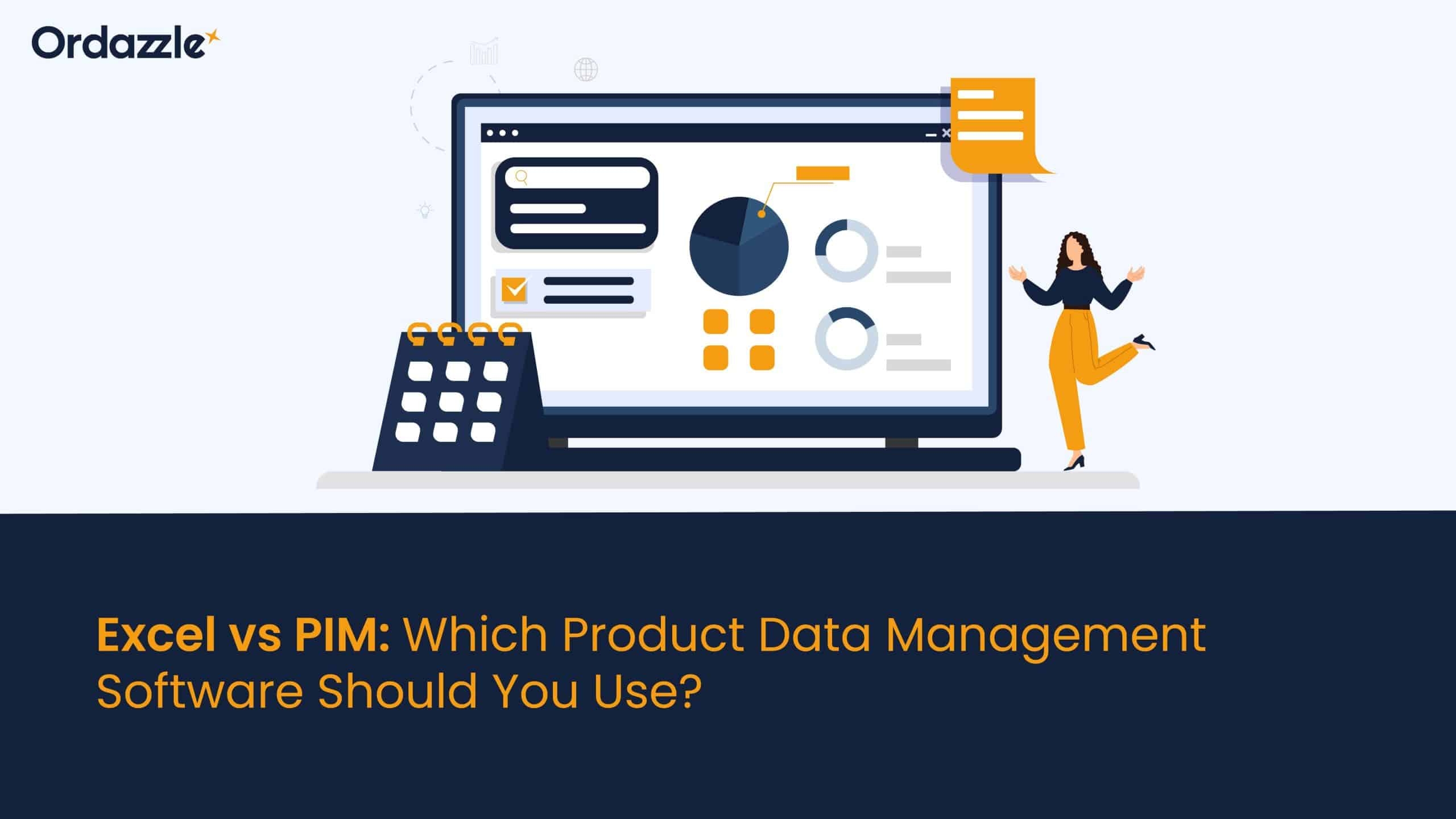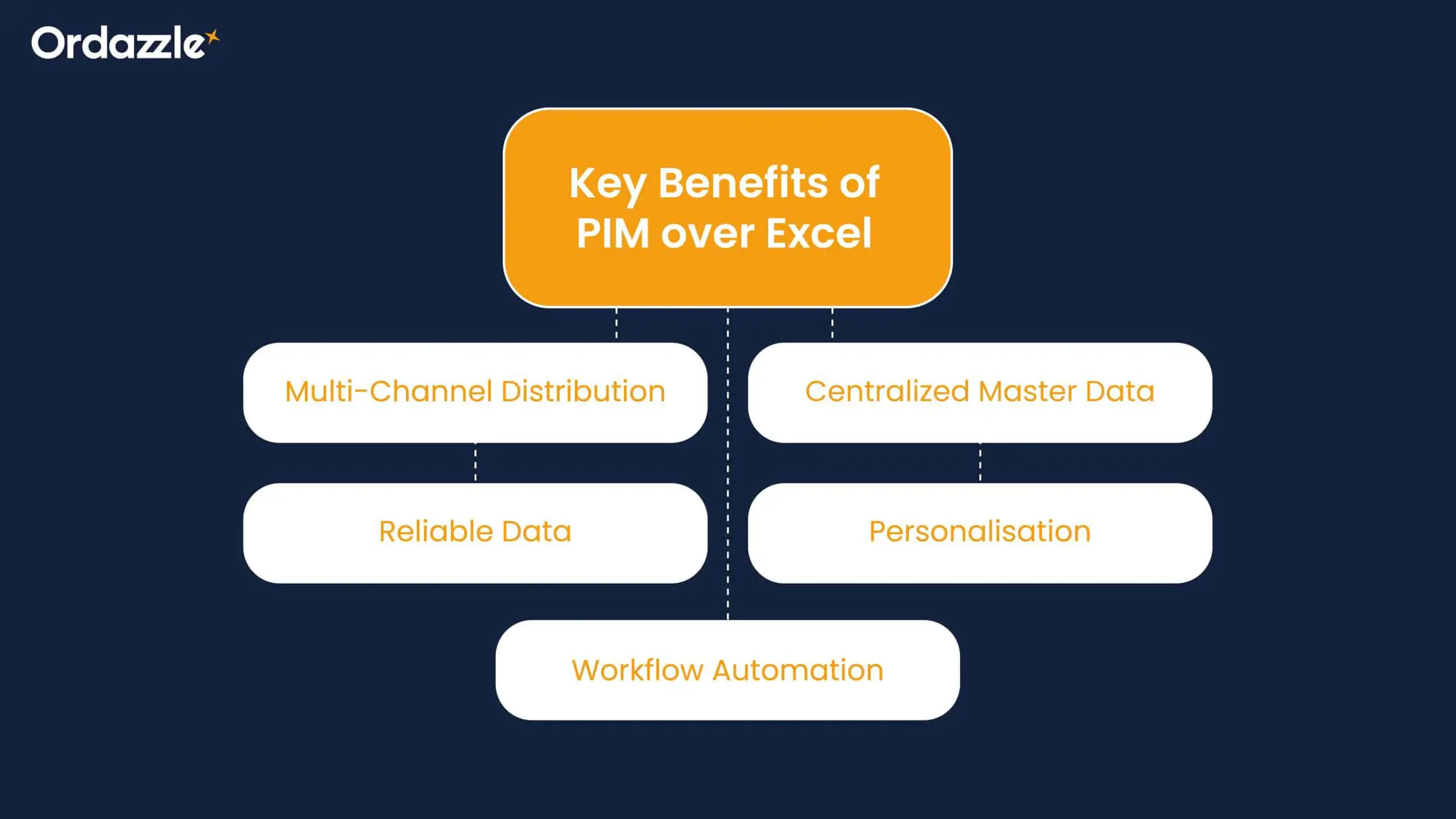Excel vs PIM: Which Product Data Management Software Should You Use?

Let’s face it: the quality of your product information ultimately determines the quality of your customer experience. The right data allows businesses to understand changing trends, track customer behaviour, and develop their offerings accordingly.
However, given the sheer volume of data generated by e-Commerce companies, product data management can become another pain point. Most companies resort to using Excel and spreadsheets to accomplish this.
More technology-forward companies, on the other hand, invest in dedicated product information management software to establish more control and visibility over their data.
What should you do then? Well, that’s what we aim to uncover in this blog post. Read on to find out a comprehensive comparison between these two platforms and what you should choose.
Excel for Product Data Management
Excel is one of the most simple, flexible, and versatile pieces of software for storing, analyzing, and managing data. However, that’s where the problem lies – Excel’s claim to fame has often been its simplicity rather than any advanced features.
So, when the complexity of data increases, the two-dimensional display of data gets outdated fast. Here are some of the challenges that sales teams usually face.
ALSO READ: PIM: The key to multi-store e-commerce success
Limitations of Excel for Product Data Management
- Difficulty in Ensuring Data Consistency: Ensuring consistency across different spreadsheets and files without established data models can lead to discrepancies in product data management.
- Limited Scalability: Excel’s performance degrades with large datasets, leading to potential data corruption and slow operation.
- Lack of Automation: Excel’s lack of automated workflows means updating and managing product data is time-consuming, especially in fast-paced manufacturing environments.
- Data Errors: When data is manually entered, mistakes and discrepancies are more likely to occur, compromising the accuracy of product details.
- Limited Collaboration: Without real-time collaboration features, Excel makes it challenging for teams to maintain version control and ensure data consistency.
- Data Security Concerns: Excel files are susceptible to unauthorized access, making it challenging to ensure data security, especially when dealing with sensitive product information.
- Difficulty in Handling Variants: Excel struggles to manage hierarchical data models, making it difficult to handle product variants and configurations accurately.
- Dependency on Manual Formulas: Manual input for formulas in Excel increases the likelihood of errors, potentially affecting accuracy in critical product data.
- Limited Support for Product Lifecycle Management (PLM): Excel lacks specialized features for comprehensive product lifecycle and product data management, hindering efficient tracking and optimization from design to distribution.
- Version Control Challenges: Managing versions and tracking changes in product data is complex with spreadsheets, making auditing and maintaining a clear edit history challenging.
How PIM Overcomes Excel’s Limitations in Product Data Management
Product information management software lets you store, enhance, and manage complex product data. It helps centralise product-related data, streamlining the process of managing and updating accurate information throughout multiple marketing and sales channels.
PIM tools are compatible with most eCommerce solutions, enterprise resource management (ERP) software, and customer relationship management (CRM) systems, making up-to-date product information accessible across your organisation.
PIM systems can be particularly beneficial for eCommerce and retail businesses whose sales strategies, product catalogues, and marketing messages change frequently.
Key Benefits of PIM over Excel

- Multi-Channel Distribution
Many brands utilize an omni-channel approach to establish a connection with their customers across channels. As such, creating a consistent brand presence across various channels can be a significant challenge for product marketers.
However, with PIM software, digital and physical product data management across channels becomes much easier. PIM system administrators can allocate assets to a catalogue hierarchy, which can then be aligned with marketing campaigns. Additionally, PIM allows product marketers to make prompt changes and swiftly launch new content as needed.
- Centralized Master Data:
PIM helps you organise disparate data within your systems while ensuring the accuracy and quality of product information throughout its lifecycle.
Centrally accessible also enhances the efficiency of marketing and sales teams while helping you grow your product catalogue without creating needless SKUs, which can clutter your ERP system.
- Reliable Data
When data is entered into a product information management software, it is attributed to a category, de-duped, and added to the right place within the PIM catalogue. PIM users can prioritize different data sources, and the data will be updated and refreshed regularly to ensure that they are always working with the most current product information. This reduces the risk of using obsolete or incorrect information when creating marketing materials or offers with outdated specifications, incorrect prices, or discontinued products.
- Personalisation
Usually, sales teams depend on product and marketing teams to compile the necessary sales materials. These presentations and pitches are created using a one-size-fits-all approach geared towards an average consumer and, as such, lack the specificity that today’s customers want.
Sales reps can utilize PIM to select approved product information and create a customized sales proposal. They simply need to choose a template, products, and pricing structure that best suits their prospect.
- Workflow Automation:
PIM reduces manual work and improves efficiency by automating tasks like data entry, validation, approvals, and updates.
PIM and Your Omni-channel Business
PIM systems can benefit brands that have a high number of SKUs, complex product relationships, or an omni-channel selling strategy.
PIM solutions democratize product data, equipping supply chain, marketing, sales, and customer service teams with the necessary information to interact with prospects and customers effectively.
To significantly increase receptiveness to your products and decrease time to market, you need a top-of-the-line product data management system.
Well, Ordazzle checks all the boxes where efficiency, automation, democratization, customer experience, and user-friendliness are concerned.
Contact us today to learn how our product information management software can help you improve your e-Commerce management.


